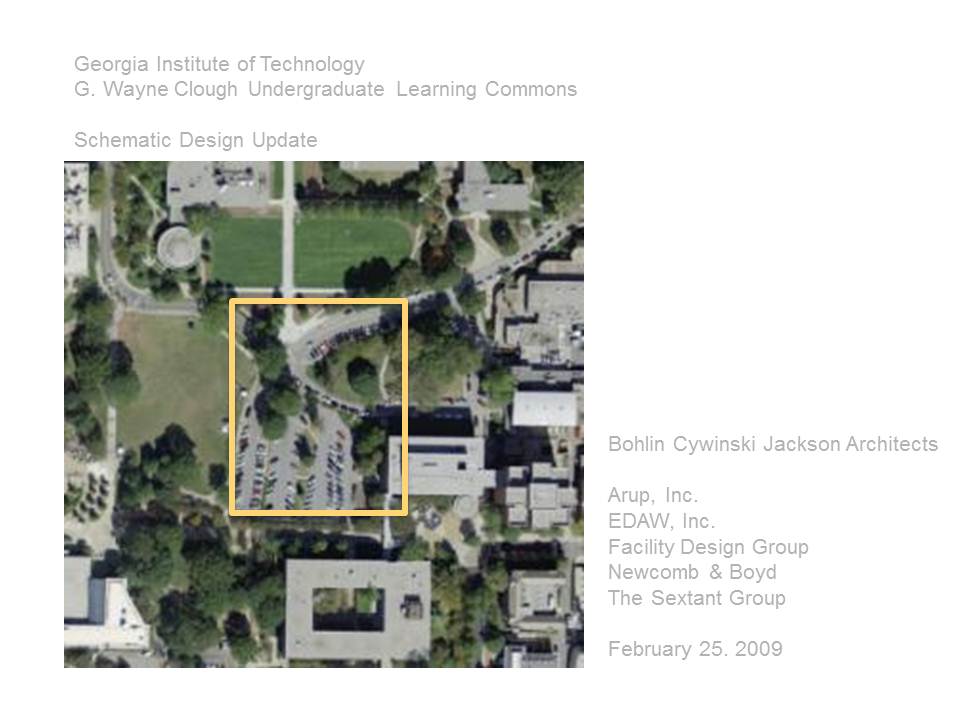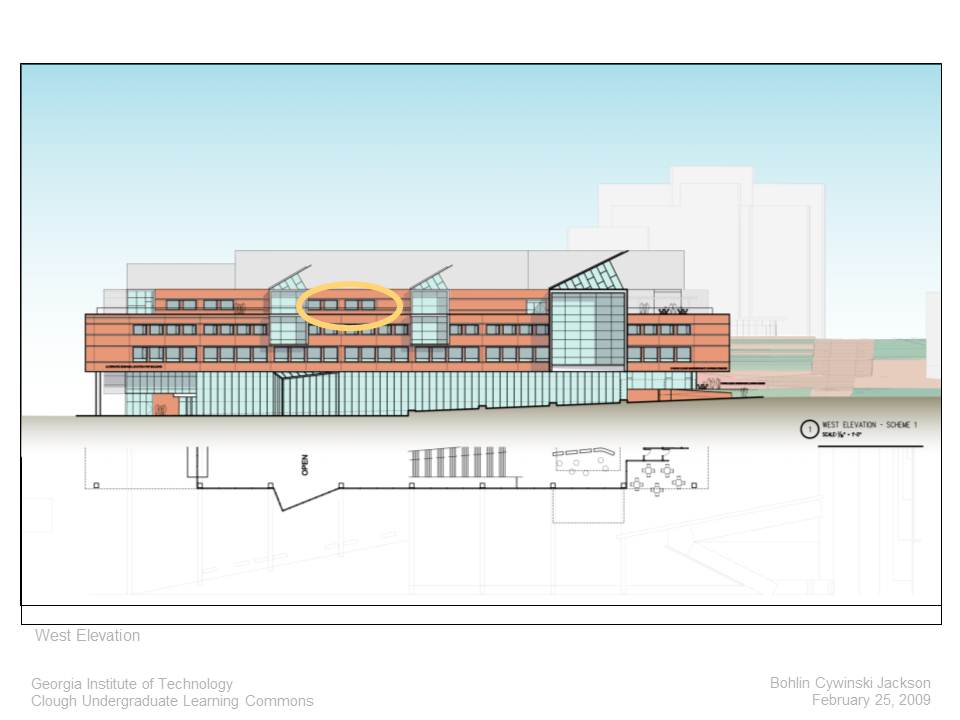IMAGINING IT. BUILDING IT. LIVING IT.
A new model for flexible learning environments
Karen J. Head, Georgia Institute of Technology
Rebecca E. Burnett, Georgia Institute of Technology
1.0 SITUATING THE VISION
The Communication Center at Georgia Tech started in a way that most of us in English studies can only dream about—the opportunity to design and see through to completion a new center that serves the broad communication needs of undergraduate and graduate students across campus. As part of a strong, multimodal, institute-wide Writing and Communication Program, our Communication Center has important and defining characteristics as a highly visible academic unit on campus: a clear vision and mission, committed leadership, research-based programs, professional and peer tutors, a centrally located physical environment, and leading-edge technology.
In this chapter we tell a story that has space at the core, a story that begins with imagination, develops with building construction, and concludes with our living in and using the space. The story is necessarily infused with issues such as politics, proximity, disciplinarity, and design as they affect the spaces in our new, institute-wide Communication Center, situated in the G. Wayne Clough Undergraduate Learning Commons.
A core philosophy for our Communication Center is that our space is appropriately located in the university’s learning commons. Since the late 1990s, Georgia Tech imagined various plans to create a space that served as a learning commons, a space especially designed for undergraduate students to see as theirs, a space that centralized many first-year classes and offered frequently used resources and services into a single learning commons. Figure 1  shows the selected location for this new space—in the middle of the 400-acre campus, adjacent both to the library and to the classroom building that is home to the School of Literature, Media, and Communication (morphed from the former Department of English in 1990 and from the School of Literature, Communication, and Culture in 2012). The area outlined in yellow in Figure 1 identifies the location of the new Clough Commons in relation to the center of campus.
shows the selected location for this new space—in the middle of the 400-acre campus, adjacent both to the library and to the classroom building that is home to the School of Literature, Media, and Communication (morphed from the former Department of English in 1990 and from the School of Literature, Communication, and Culture in 2012). The area outlined in yellow in Figure 1 identifies the location of the new Clough Commons in relation to the center of campus.
Figure 1. Location of Clough Commons on campus.
From the beginning of the vision for this undergraduate learning commons, a communication center was incorporated as part of the plans, reported, for example, in the campus newspaper, the Technique: “A new communication center will also be added, where students can get help writing papers, speeches and presentations” (Bohra, 2008). While the reporting showed a narrow perspective of what a communication center does, the message about our presence in the learning commons was consistent. Our Communication Center was finally located on the east side of Clough Commons, on the fourth floor, which is important both for the political statement it makes and for the proximity to other spaces in the learning commons. The fourth floor was called the “premier floor” by the building’s lead architect in a number of planning meetings, largely because it connects directly with the library. During planning, units vied for space on this floor. Further, the Communication Center faces the new Tech Green (rapidly becoming the official quadrangle for the campus) and is across a wide, well-landscaped walkway from Skiles Classroom Building, home of the School of Literature, Media, and Communication.  The location of Clough Commons on campus signals the centrality of this undergraduate learning commons to the institutional mission; the location of the Communication Center in Clough signals the institution’s commitment to communication. Figure 2 shows the East elevation of Clough Commons, with the location of the Communication Center outlined in yellow.
The location of Clough Commons on campus signals the centrality of this undergraduate learning commons to the institutional mission; the location of the Communication Center in Clough signals the institution’s commitment to communication. Figure 2 shows the East elevation of Clough Commons, with the location of the Communication Center outlined in yellow.
Figure 2. East elevation of Clough Commons 2009, showing location of Communication Center on the fourth floor.
Placing our Communication Center within an extended learning commons makes it part of what Shay Keating and Roger Gabb (2005) described as the “functional integration” of space that is learning oriented, learner centered, university-wide, flexible, collaborative, and community building (p. 3). In our story (first the vision, then the building, and now the living), we are concerned with all of Keating and Gabb’s synergistic factors, which deal with the creation and use of the space within a broader learning commons. More specifically, we use politics, proximity, and design as ways to focus and narrow our discussion about the evolution of our particular space.
Politics, Proximity, and Design
The processes involved in the development of our Communication Center began with good intentions that were influenced by preconceived notions of administrators, architects, designers, and project managers about the purposes and uses of such a space—affecting our mission, audience, resources, and research.
- The politics of space affected the initial architectural program—the initial document defining the amount of space allotted to each unit in the new building. As the only unit in the building that did not already have an existing space on campus, the Communication Center was especially vulnerable to the vagaries of people’s preconceived notions about such a space and buffeted by negotiations from existing units on campus who were moving to a new location.
- Attention to the proximity of units within the learning commons tells a cautionary tale. Even when we expressed strong disciplinary preferences, supported with theoretical and practical explanations, architectural preferences and administrative preconceptions often took precedence, most dramatically illustrated by the separation of the Communication Center (providing multimodal communication tutoring) and Academic Success (providing tutoring in all other disciplines)—overriding the fervent and repeated requests to be placed in close proximity.
- The design of our space was influenced by preconceptions about what students and faculty need, what comprises communication, and how students and faculty will use particular spaces.
